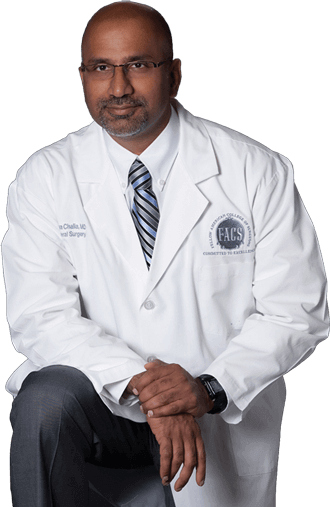
About Our Practice
Welcome to Chesapeake Vein Center & MedSpa of Chesapeake, Virginia in the Hampton Roads Metropolitan area, convenient to Virginia Beach as well as North Carolina’s outer banks. We are a premier destination for all things health and wellness, from non- and minimally invasive cosmetic treatments to the most advanced and state-of-the-art surgical care.
Under the medical direction of board-certified surgeon, ABVLM certified physician, and renowned vein specialist Dr. Surya Challa, we can help you look and feel your very best.









